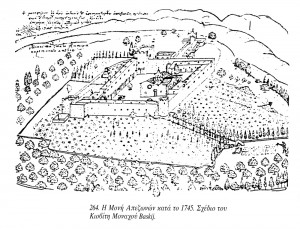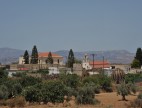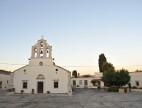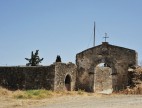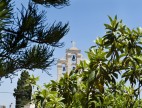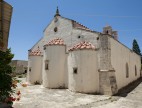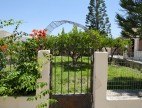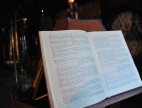Holy Monastery of Apezana
The monastery of Apezana is located on the west side of the sierra of Asterousia and north of Kaloi Limenes (Fair Havens) in an area with a significant monastic tradition. The earliest known mention of the monastery is dated to the middle of the 16th century, even though it is likely that the existence of the monastery pre-dates this period. The 16th and 17th centuries constituted a period of prosperity and intellectual radiance of the monastery in which, according to the sources, a school and a workshop for copying manuscripts functioned. Its scholar monks contributed to its peak, important personalities of the period, such as Meletios Pigas, later Patriarch of Alexandria, the manuscript writer and scholarly teacher of sacred letters, Ioasaph Dorianos, and Meletios Syrigos, an important ecclesiastical personality with significant anti-Catholic activity during the early 17th century. During the period of the Cretan revolutions of the 19th century, even though it was destroyed by the Turks because of its active participation, it managed to recover anew after a short while. In 1918 it listed 21 monks in its monastic register while many monastic dependencies were in its jurisdiction, such as the dependency of St. John at Farkatines, the All-Holy Virgin Gorgoepikoos [‘Swift to hear’] at Pegaidakia, the Monastery of St. Pelagia at Agia Varvara, as well as a dependency with urban property in Smyrna of Asia Minor. Even if, up until the late 19th century, the monastery had a purely fort-like character, as a rectangular compact complex with three towers, the subsequent catastrophes and interpolations, with the main one being the destruction of its towers, altered its form. The buildings, one-and two-storeys, develop around the courtyard. The three-aisled catholicon rises in its middle, as it was rebuilt in 1837, according to the inscriptions in relief around its doorframes. The north aisle is dedicated to St. Anthony, the nave to the Transfiguration, and the south to the Three Hierarchs. To the west side survive, at a very low height, the perimeter walls from its original single-nave catholicon. The monastery, despite its tumultuous historical course, preserves an interesting collection of artefacts of ecclesiastical art, manuscripts and early printed books.

